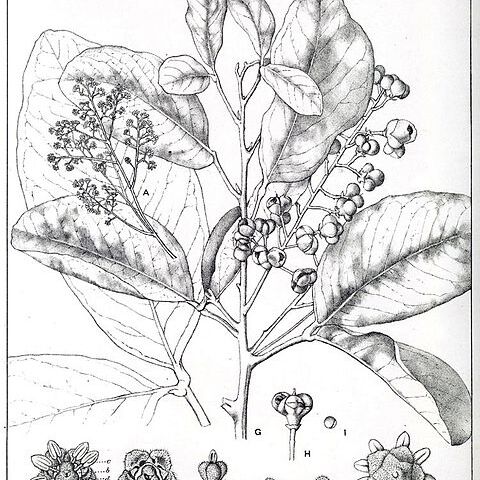Tree to 7 m high. Branchlets, leaves and peduncles appressed, pubescent or glabrous. Leaf rachis 2–8 cm long; leaflets 1 or 2 pairs, rarely 3; lamina elliptic, subobovate, elliptic-oblong, rounded, obtuse, subacute or retuse, entire, oblique and obtuse at base, 5.5–18.5 cm long, 2.5–8.5 cm wide, glabrous above, pubescent or puberulent below; lower surface glaucous, papillose; petiolule 5–10 mm long; petiole 1.5–4 cm long. Panicles 5–23.5 cm long; pedicels 1–3 mm long. Calyx 2.5–3.5 mm long, subtruncate or shallowly broadly lobed, pubescent outside. Petals minute, shorter than calyx. Fruit shortly stipitate, usually turbinate, 6–12 mm long and wide, pubescent, usually 3-lobed; lobes globose; pericarp drying thinly crustaceous. Aril smooth, lobed at apex.
More
A small to large shrub. It grows 2-6 m tall and spreads 2-5 m across. The small branches are often hairy. The leaves are oval and leathery. The new leaves are shiny and coppery bronze. They are 4-15 cm long and 2-4 cm wide. The flowers are small. They are in groups 5-20 cm long. The fruit is a 3 lobed capsule 5-7 mm long by 5-12 mm wide. The red and green seeds are edible.
It grows in tropical, subtropical and warm temperate locations. It suits moist well drained soils and can grow on dry soils. It can grow in full sun or light shade. It is sensitive to drought and frost. Adelaide Botanical Gardens.


